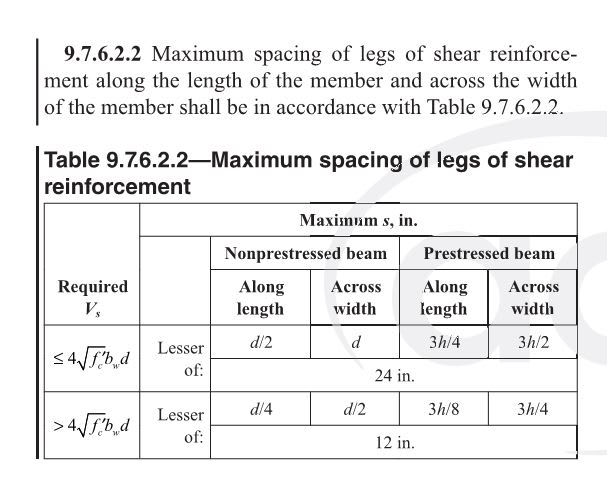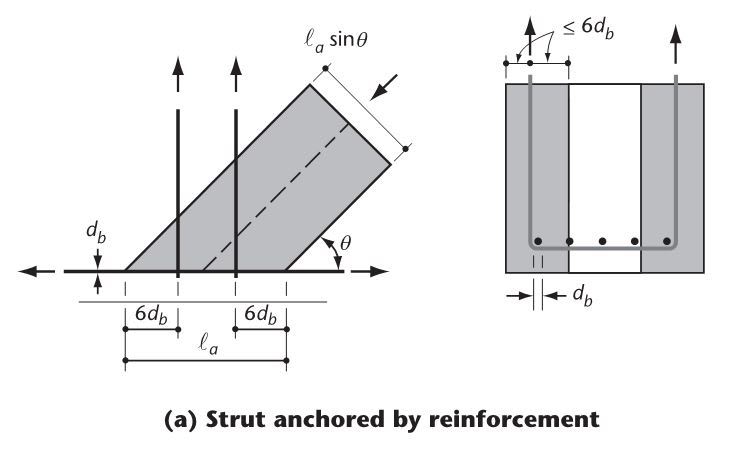That seems a little ridiculous.
Thats very relative though to your perspective, for parts of the rest of the world (you know outside of America), certain countries have had this in their codes for literally decades. Why? Because it is fundamentally required to address how shear works in the real world vs simplified code equations for the reason(s) Rapt notes.
Suddenly because ACI have finally had it codified in a similar manner and you chaps have been effectively getting away with not doing it previously, what is probably considered "standard international best practice" gets called out as being ridiculous.
To add to what Rapt notes, it is also I believe about keeping the horizontal forces developed in the cross section in check as well by limiting the strut angles to the vertical if you consider limiting cracking longitudinally along the beam if you get larger horizontal components to the vertical shear as it resolves itself to the vertical stirrup locations across the width of the cross section. The wider spaced your verticals are across the width of the section, then the higher these horizontal stresses are.
There was another recent thread where this was discussed in some detail, but for the life of me cannot locate it.
At what point would you start worrying about this?
Most codes cover this, but it may be discussed in the scenario of effective joint widths or effective beam widths, like you can only utilise longitudinal reinforcement some distance either side of the column or something similar for beam/column joint design. The latest incarnation of ACI318-19 covers this in several clauses, one obvious one being the commentary to 18.6.2. I'm sure a search will turn up other restrictions or considerations in the scenario of wider beams supported on narrower columns. Consideration of some strut and tie model across the width of the beam may be required to ensure the shear out in the extremities of the beam can transfer into axial load in the columns.


